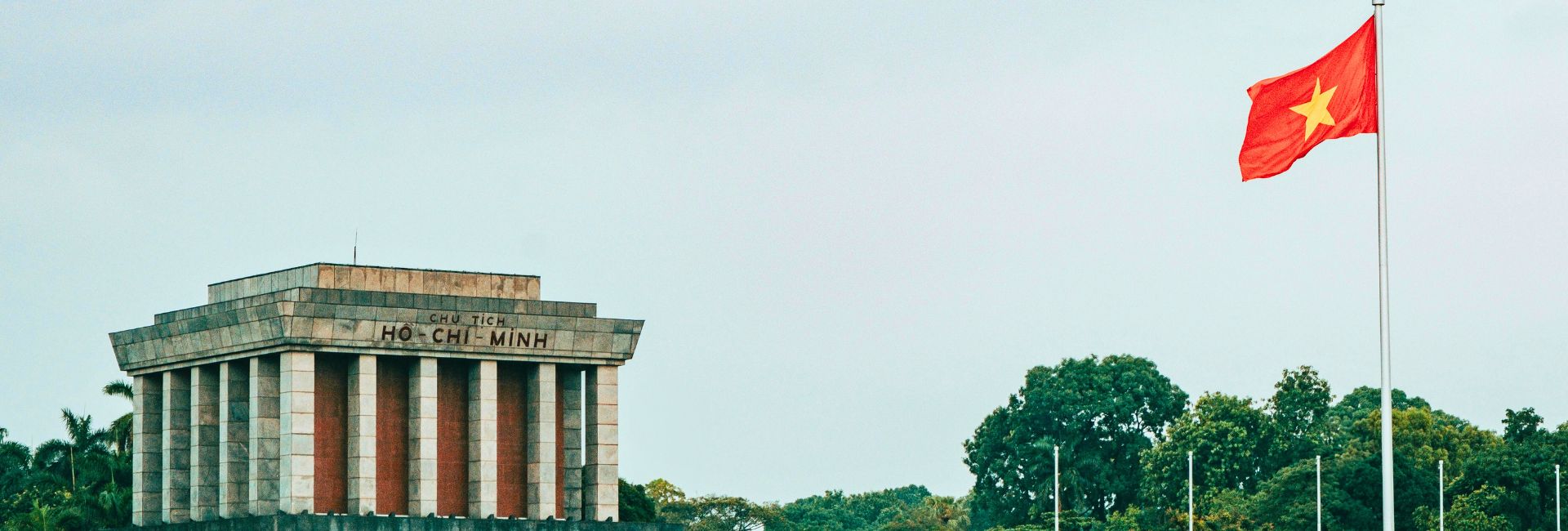If you are visiting Hanoi and want to learn about Vietnam’s most iconic leader, the Hanoi Ho Chi Minh Complex is a must-see destination. This travel blog provides you with essential information to explore the complex, including its history, main attractions, entrance fees, and tips for visiting.
What you will find in this travel blog:
- President Ho Chi Minh
- Hanoi Ho Chi Minh Complex
- How to get to Hanoi Ho Chi Minh Complex?
- Tips for visiting
- Where to visit nearby?
President Ho Chi Minh
For Vietnamese people, President Ho Chi Minh has always been an inspiration of revolutionary morality, a living example of selflessness and dedication to the Party’s and the country’s great revolutionary cause, and a person who serves the Fatherland and its citizens with all of their heart. All Vietnamese call him Uncle Ho. He is also known by his original name, Nguyen Sinh Cung, Nguyen Tat Thanh, or Nguyen Ai Quoc.
In addition to being the president of the Democratic Republic of Vietnam from 1945 to 1969, Ho Chi Minh was the founder of the Indochina Communist Party and its successor, the Viet-Minh. Vietnamese people prevailed in the resistance struggle against French colonialism under his leadership.
On the morning of September 2, 1969, Ho Chi Minh died after a heart attack. According to his will, he wanted to be cremated and have his ashes interred among the highlands of North, Central, and South Vietnam. However, the government chose to construct the Ho Chi Minh Complex in Hanoi in order to commemorate Uncle Ho’s immense devotion to the nation, the affection that all Vietnamese have for him, and the chance for Southern Vietnamese to see him when the nation comes together.
Hanoi Ho Chi Minh Complex
The Hanoi Ho Chi Minh Complex is a vast area in Ba Dinh District dedicated to preserving the memory of Ho Chi Minh. It includes multiple historical sites, each offering a unique insight into his life and Vietnam’s history:
- Ba Dinh Square (where Vietnam’s First Independence Day was celebrated).
- Ho Chi Minh’s Mausoleum (still preserves Uncle Ho’s embalmed remains),
- Ho Chi Minh Museum
- Ho Chi Minh’s house on stilts
- The Presidential Palace, often known as the White House of Vietnam
- One Pillar Pagoda
- The House No.54 (an important historical site)
Ba Dinh Square
- Location: Ba Dinh District, Hanoi
- Entrance Fee: Free
- Opening Days: Open daily
- Opening Hours: Accessible all day
Ba Dinh Square is a significant historical site where Ho Chi Minh proclaimed Vietnam’s independence on September 2, 1945. This large, open space is often filled with locals and tourists, creating a vibrant atmosphere. The square is surrounded by important landmarks, including the Ho Chi Minh Mausoleum and the Presidential Palace.
You can enjoy leisurely walks around the square while appreciating its lush gardens and well-maintained paths. The area is also a popular spot for flag-raising ceremonies, which take place every morning. It’s an excellent location for photography, especially during sunrise and sunset, when the light casts a beautiful glow over the square.
Ba Dinh Square is not just a historical landmark; it is a place where you can feel the pulse of Hanoi and reflect on Vietnam’s journey toward independence.
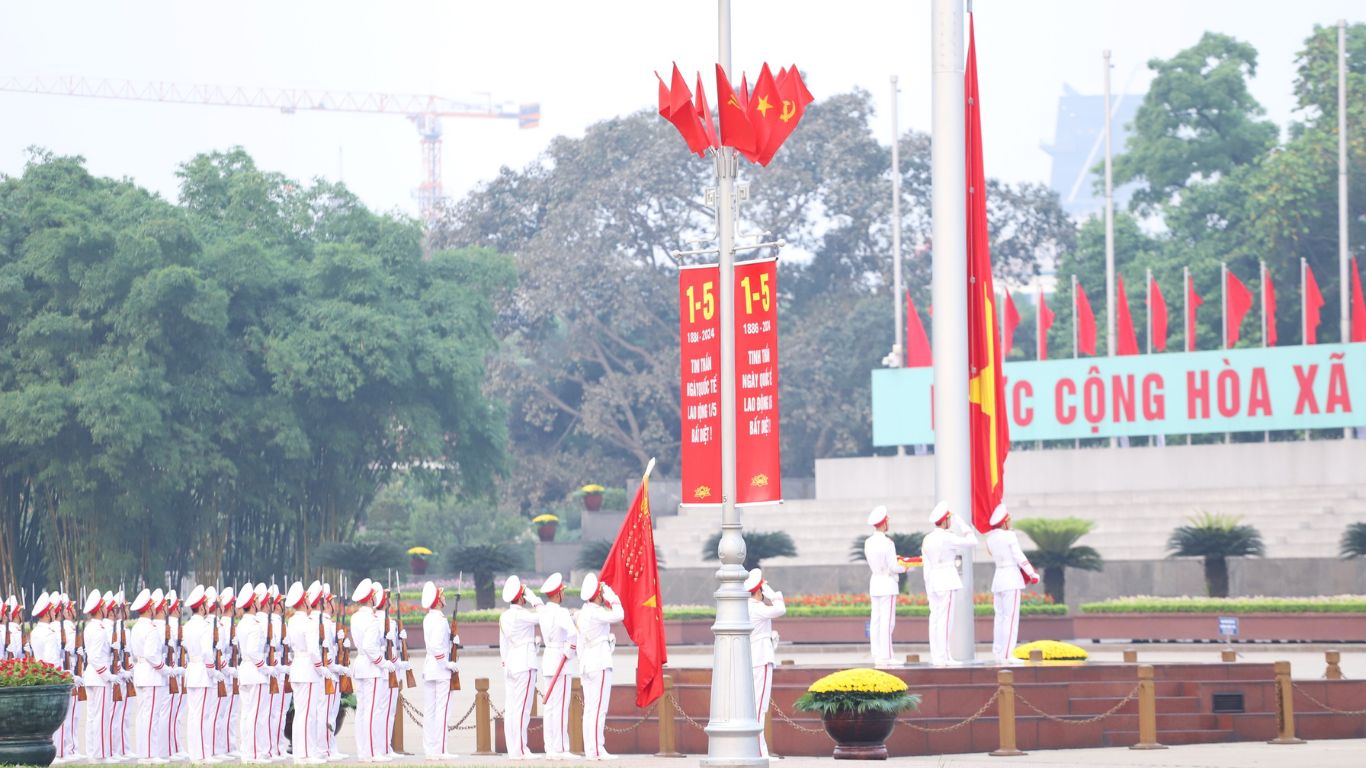
Ho Chi Minh’s Mausoleum
- Location: 25 Hung Vuong, Dien Ban, Ba Dinh, Hanoi
- Opening days: Tuesday, Wednesday, Thursday, Saturday, Sunday
- Opening hours: Seasonal:
- April 1st to October 31st: 7.30 a.m – 10.30 a.m (Saturdays, Sundays and public holidays: 7.30 a.m – 11.00 a.m)
- November 1st to March 31st of next year: 8.00 a.m – 11.00 a.m
- Entrance fee: Free
The Ho Chi Minh Mausoleum is a solemn monument dedicated to the revolutionary leader Ho Chi Minh, who played a crucial role in Vietnam’s fight for independence. The mausoleum houses his preserved body, displayed in a glass sarcophagus, allowing you to pay their respects.
The building itself is a striking example of Soviet-style architecture, constructed from gray granite. Surrounding the mausoleum are beautifully landscaped gardens, creating a serene environment for reflection.
You are required to follow specific protocols when entering the mausoleum, such as maintaining silence and dressing respectfully. The atmosphere inside is respectful, with guards ensuring that the rules are followed.
Many visitors find the experience moving, as it provides a direct connection to Ho Chi Minh’s legacy and the history of Vietnam. The mausoleum is a must-visit for anyone wanting to understand the significance of Ho Chi Minh in Vietnamese culture and history.
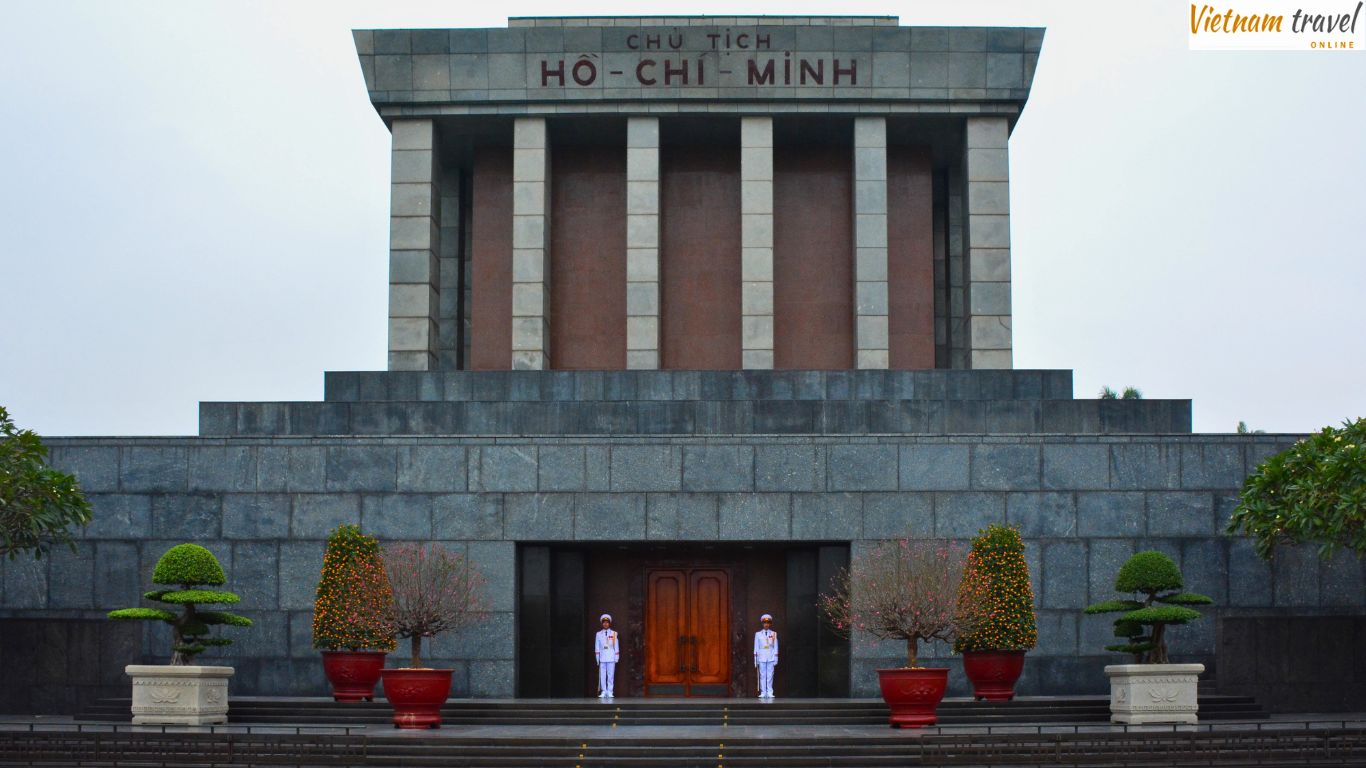
Ho Chi Minh Museum
- Location: 185/19 Ngoc Ha, Doi Can, Ba Dinh, Hanoi
- Opening days: Tuesday, Wednesday, Thursday, Saturday, Sunday
- Opening hours:
- Morning: from 08:00 to 12:00
- Afternoon: from 14:00 to 16:30
- Entrance fee: 40.000 VND (~$1.7)
The museum features a wide array of exhibits, including photographs, artifacts, and documents that chronicle his life, from his early years to his role in the independence movement.
Its architecture is symbolic, designed to reflect Ho Chi Minh’s ideals and the revolutionary spirit of Vietnam. Inside, you can explore various themed rooms that highlight different aspects of Ho Chi Minh’s life, his thoughts, and his contributions to the nation.
The museum also hosts temporary exhibits that focus on Vietnamese culture, history, and the revolutionary struggle, providing a broader context to Ho Chi Minh’s impact.
This museum is an essential stop for anyone interested in understanding Ho Chi Minh’s philosophy and the historical events that shaped modern Vietnam. It offers a poignant insight into the man behind the myth and serves as a reminder of the ongoing journey of the Vietnamese people.
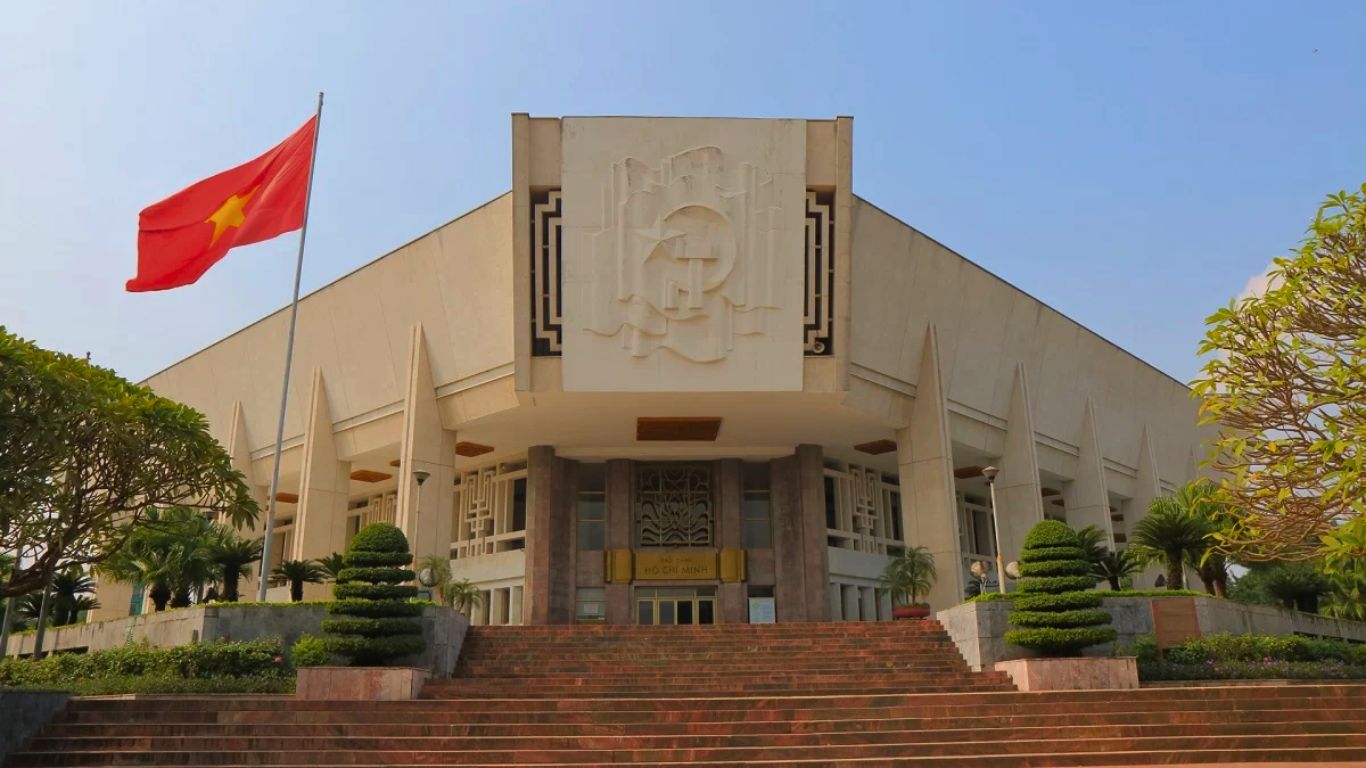
Ho Chi Minh’s house on stilts
- Location: Near House No. 54 within the Hanoi Ho Chi Minh complex.
- Entrance Fee: Free.
- Opening Days: Open daily.
- Opening Hours: 8:00 AM – 11:30 AM; 1:30 PM – 4:30 PM.
Ho Chi Minh’s Stilt House is a simple yet profound structure that reflects the leader’s values of modesty and connection to nature. Ho Chi Minh lived here during his later years, and the house is surrounded by a beautiful garden filled with lush greenery.
The stilt house is designed in a traditional Vietnamese style, constructed from wood and raised on stilts to provide ventilation and protection from flooding. Inside, the furnishings are minimal, reflecting his preference for simplicity over luxury. You can see photographs and items that belonged to him, offering a glimpse into his daily life.
The serene environment surrounding the stilt house allows you to appreciate the peaceful lifestyle Ho Chi Minh cherished. It’s a great spot to reflect on his legacy and the principles he stood for, such as humility and dedication to the Vietnamese people.
Visiting Ho Chi Minh’s Stilt House provides a unique perspective on the man behind the revolutionary leader, emphasizing his commitment to living a life aligned with his ideals.
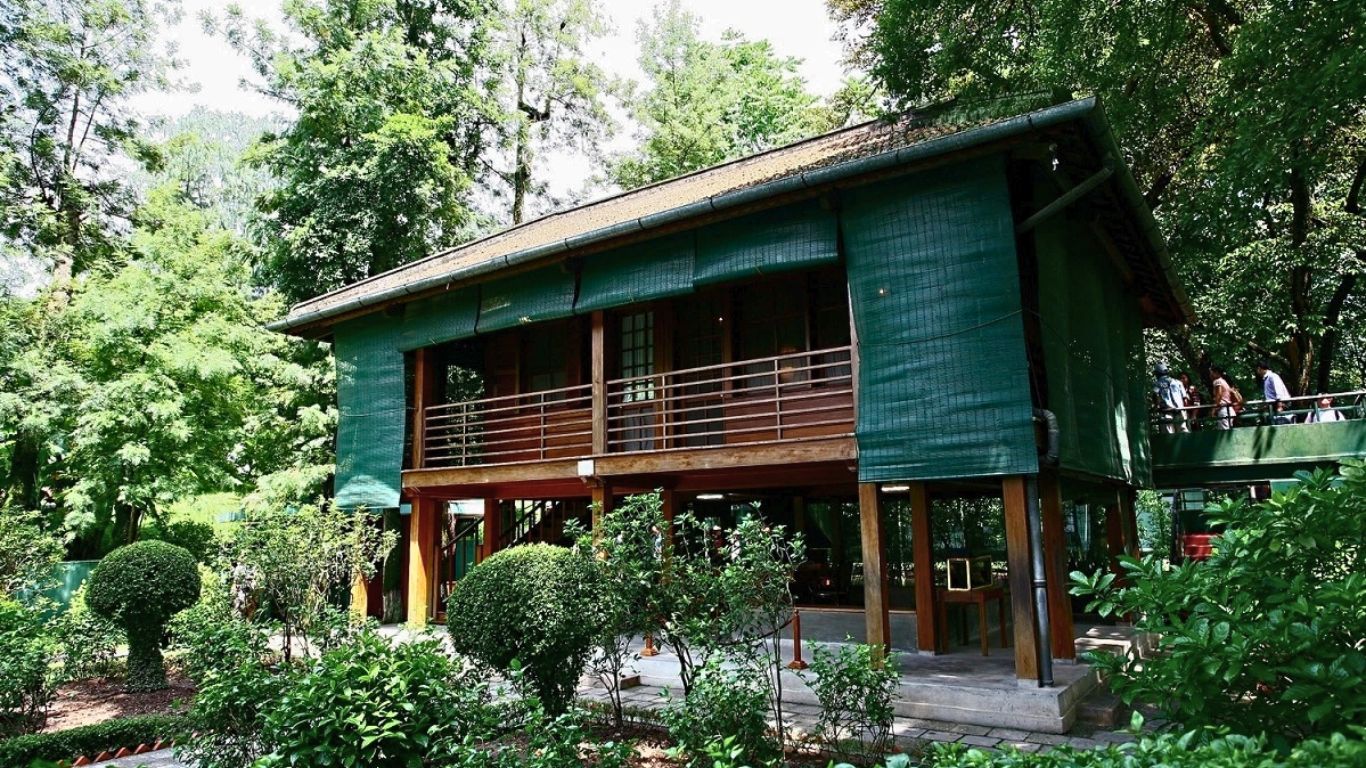
The Presidential Palace
- Location: Adjacent to the Ho Chi Minh Mausoleum within the Hanoi Ho Chi Minh complex.
- Entrance Fee: 30,000 VND (approximately $1.30).
- Opening Days: Open daily except for Mondays.
- Opening Hours: 8:00 AM – 11:30 AM; 1:30 PM – 4:30 PM.
The Presidential Palace, also known as the Presidential Palace of Vietnam, is a grand colonial building that served as the official residence of Ho Chi Minh during his leadership. The palace is an impressive example of French colonial architecture, featuring high ceilings, large windows, and beautifully landscaped gardens.
While Ho Chi Minh used the palace for official functions, he preferred to live in the nearby stilt house, reflecting his modest lifestyle. You can explore the expansive grounds, which include ornamental gardens, fountains, and several outbuildings.
Inside, the palace is adorned with historical artifacts and photographs that illustrate Ho Chi Minh’s role in Vietnam’s history. You can see the lavishly decorated rooms where important meetings and events took place.
The Presidential Palace is not only a symbol of Vietnam’s political history but also a testament to Ho Chi Minh’s vision for a united and independent Vietnam. Walking through the palace grounds offers a deeper understanding of the historical context in which Ho Chi Minh operated and the legacy he left behind.
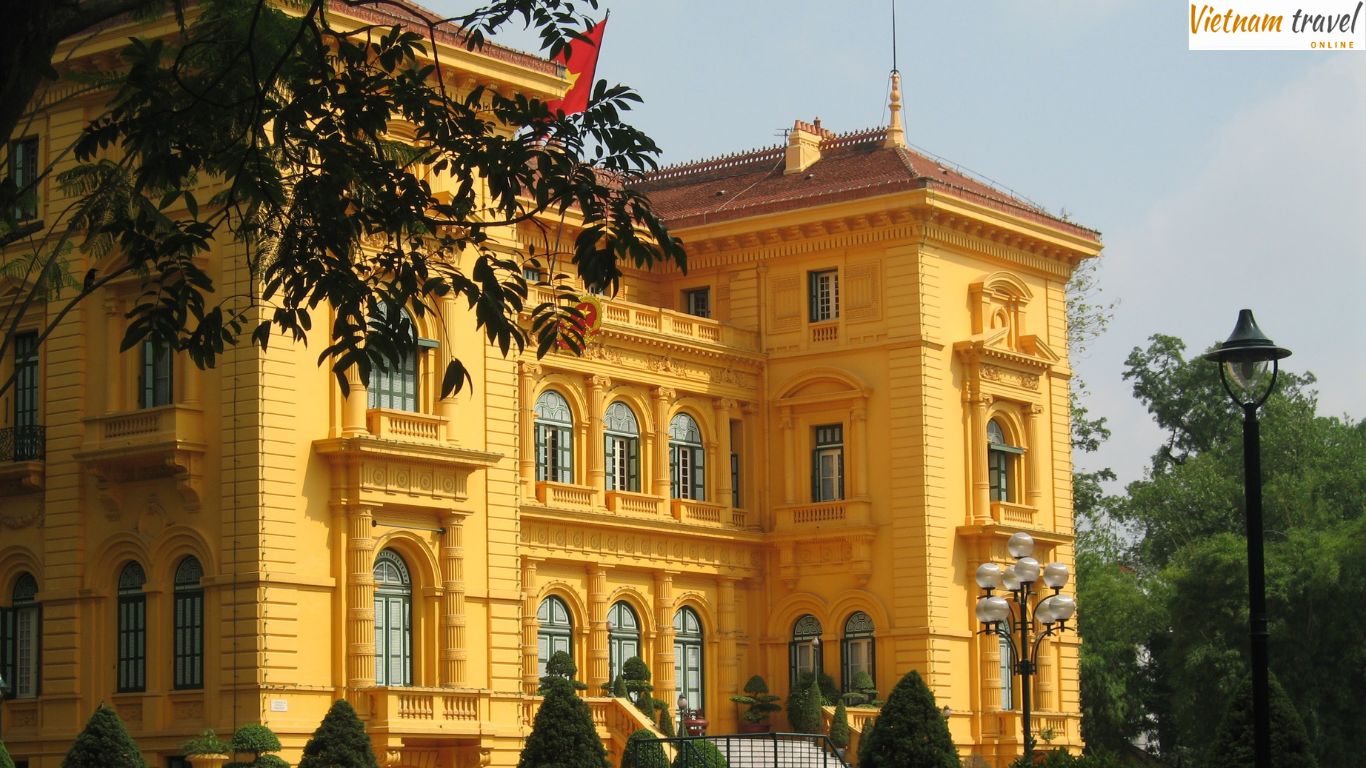
One Pillar Pagoda
- Location: Near the Ho Chi Minh complex, in Ba Dinh District, Hanoi.
- Entrance Fee: Free.
- Opening Days: Open daily.
- Opening Hours: 8:00 AM – 5:00 PM.
The One Pillar Pagoda, also known as Chùa Một Cột, is one of Vietnam’s most iconic religious structures and a symbol of Hanoi. Built in 1049 during the reign of Emperor Ly Thai Tong, the pagoda is designed to resemble a lotus blossom, which is a significant symbol in Vietnamese culture.
The pagoda is constructed on a single stone pillar, rising above a lotus pond. This unique architectural style makes it a striking sight and a popular spot for photographs. The structure is small, but its intricate design and historical significance make it a must-visit.
Inside, you can find a small shrine dedicated to the goddess of mercy, Avalokiteshvara. People often come here to pray for health and happiness, adding to the spiritual atmosphere of the site.
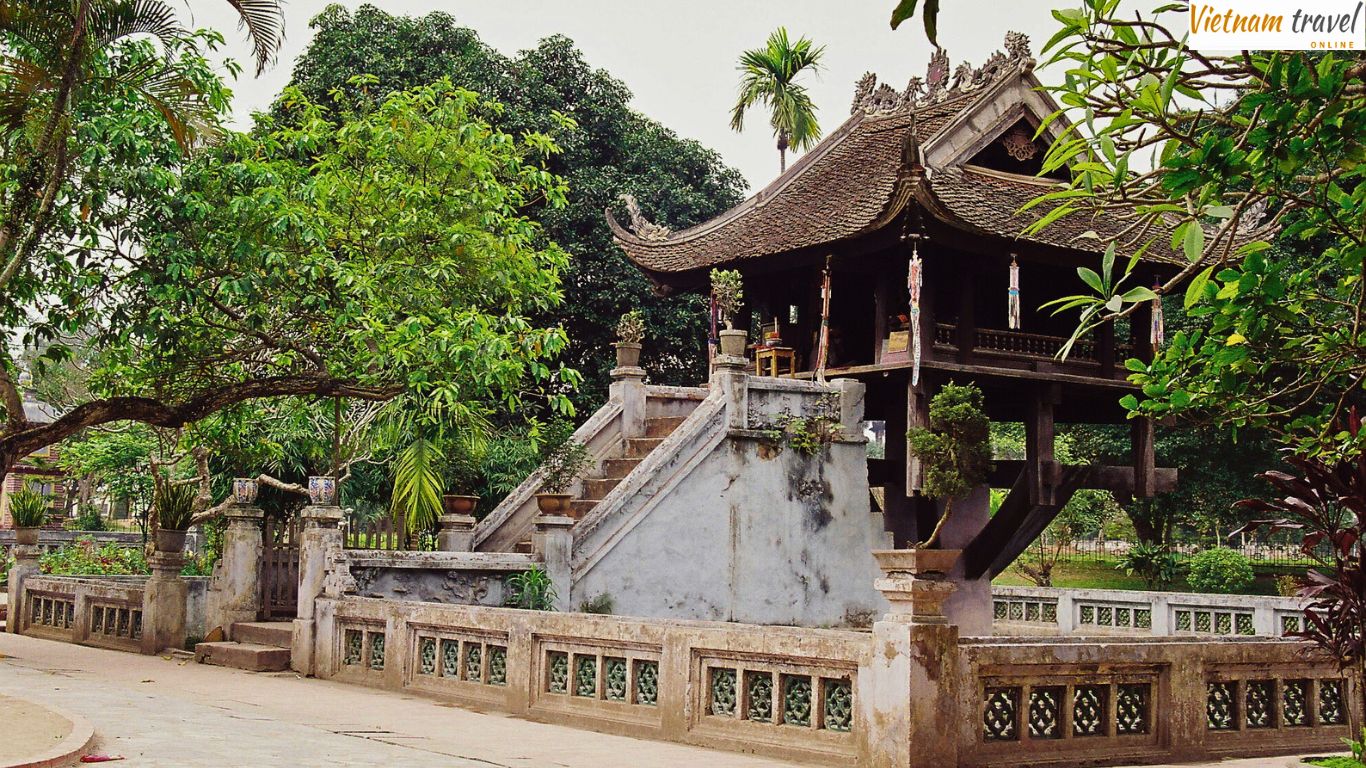
>>> Read more about One Pillar Pagoda: One Pillar Pagoda – A charm of Hanoi & Reasons why you should visit?
The House No.54 (an important historical site)
- Location: Behind the Presidential Palace within the Hanoi Ho Chi Minh complex.
- Entrance Fee: Included with the museum ticket.
- Opening Days: Open daily except for Mondays.
- Opening Hours: 8:00 AM – 11:30 AM; 1:30 PM – 4:30 PM.
House No. 54 is a significant site within the Hanoi Ho Chi Minh complex, as it served as the residence and working space for Ho Chi Minh during his leadership. The house is a modest yet functional structure, reflecting Ho Chi Minh’s values of simplicity and practicality.
You will find the interior furnished with basic items, showcasing a lifestyle that prioritized work and service over luxury. The house is decorated with photographs and memorabilia that tell the story of Ho Chi Minh’s life and his dedication to the Vietnamese people.
The surrounding gardens add to the charm of House No. 54, providing a peaceful setting for reflection. The site emphasizes Ho Chi Minh’s connection to the common people and his commitment to living in accordance with his principles.
Visiting House No. 54 allows you to gain a deeper understanding of Ho Chi Minh not just as a political leader but as a person who valued humility and service. This site is an essential stop for anyone looking to appreciate the life and legacy of Vietnam’s founding father.
How to get to Hanoi Ho Chi Minh Complex?
- By Taxi/Grab: Easy and convenient, costs around 50,000-100,000 VND ($2-$4 USD) from most parts of Hanoi.
- By Bus: Public buses 09, 22, 33, and 45 stop near the complex.
- By Walking: If you are staying in the Old Quarter, it is a 20-30 minute walk.
Tips for visiting
- Dress modestly: Shorts and sleeveless shirts are not allowed in the mausoleum.
- Arrive early: The mausoleum has long lines, so visiting early helps avoid crowds.
- Follow rules: No cameras, talking, or stopping inside the mausoleum.
- Check opening hours: Some attractions are closed on certain days.
- Respect the site: It is a national monument, so quiet and respectful behavior is required.
Where to visit nearby?
After visiting the Hanoi Ho Chi Minh Complex, explore other nearby attractions:
- Temple of Literature (10 minutes away) – Vietnam’s first university, built in 1070.
- Vietnam Military History Museum (5 minutes away) – Showcases Vietnam’s military history with aircraft and weapons.
- West Lake and Tran Quoc Pagoda (15 minutes away) – A scenic lake with Hanoi’s oldest pagoda.
- Hanoi Old Quarter (20 minutes away) – A bustling area with historic streets, local food, and markets.
The Hanoi Ho Chi Minh Complex is one of the most important historical sites in Vietnam. It offers a deep understanding of Ho Chi Minh’s life and legacy. Whether you are a history enthusiast or a casual traveler, visiting this complex is a meaningful experience during your trip to Hanoi.
Mo Nguyen – From Vietnam Travel Online


